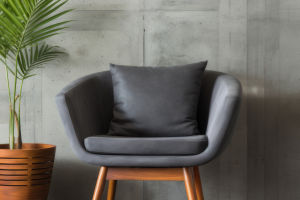Eye shadow is a fundamental element in makeup, serving not only to add color to the eyes but also to express personality and creativity through various techniques and styles.
Historically, eye shadow has been used by women to enhance the beauty of their eyes. From the use of charcoal powder in ancient Egypt to today’s advanced cosmetics, the evolution of eye shadow mirrors the development and transformation of makeup artistry.
In contemporary makeup, eye shadows come in a wide array of colors and finishes, from subtle natural hues to vibrant pearlescent shades, each offering its unique allure. The most common forms of eye shadow include powder, cream, and liquid.
Powder eye shadow, the most traditional type, boasts a light texture, is easy to apply, and suits all skin types. Cream eye shadow offers greater durability and higher coverage, making it ideal for situations where long-lasting makeup is essential. Liquid eye shadow typically provides stronger color payoff and shine, perfect for creating bold and distinctive effects.
Choosing the right color of eye shadow is crucial, as different shades can produce vastly different results. Dark eye shadows, such as black and dark brown, are excellent for crafting deep, dramatic eye makeup, enhancing the eyes’ allure and mystery.
In contrast, lighter shades like beige and light pink can brighten the eyes, making them appear more refreshed and radiant. When selecting eye shadow colors, it’s important to consider both your skin tone and eye color.
Warm-toned eye shadows, such as gold and copper, tend to complement those with warm skin tones, whereas cool-toned eye shadows, like silver and blue, are better suited for cool skin tones.
The techniques used to apply eye shadow also play a significant role. Typically, it is advisable to prime the eyelids with a base product to ensure the eye shadow adheres well and lasts longer. Different brushes and application methods can achieve various effects.
For example, a flat eye shadow brush allows for precise application, creating a refined look, while a round brush is ideal for blending, producing a gradient effect that makes the eye shadow appear more natural.
Gradient eye shadow application is particularly popular at present, adding dimension and depth to eye makeup through smooth transitions between colors.
Enhancing the effect of eye shadow can also be achieved by pairing it with other cosmetic products. For instance, combining eye shadow with eyeliner and mascara can complete the eye makeup, adding layers and definition.
Additionally, coordinating eye shadow with other products such as lipstick and blush can create a cohesive and harmonious overall look.
Removing eye shadow is an essential part of the makeup process. Given the delicate nature of the skin around the eyes, it is important to use a gentle makeup remover.
There are numerous eye-specific makeup removers available, including eye makeup removers and general makeup removers. These products effectively remove eye shadow while safeguarding the sensitive skin around the eyes.
As makeup technology continues to advance, the methods and techniques for using eye shadow are constantly evolving. From simple single-color applications to intricate multi-color gradients, each technique allows for the expression of individuality and creativity.
Whether for everyday wear or special occasions, eye shadow enables the creation of diverse makeup effects, showcasing confidence and charm.
With ongoing innovations in cosmetic technology, future developments in eye shadow will likely bring new color and texture possibilities, further expanding the horizons of beauty.


